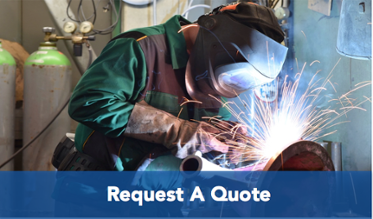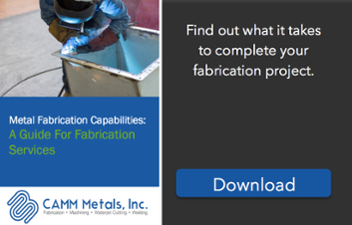-min.jpeg?width=365&name=AdobeStock_103755884(1)-min.jpeg) Designing products for manufacturing requires a mentality that necessitates a constant vigilance to design parts with their future manufacturing requirements in mind. By taking certain aspects into consideration early on, it’s less likely that you will have to return to your design for drastic changes later on, likely saving you both time and money.
Designing products for manufacturing requires a mentality that necessitates a constant vigilance to design parts with their future manufacturing requirements in mind. By taking certain aspects into consideration early on, it’s less likely that you will have to return to your design for drastic changes later on, likely saving you both time and money.
CAMM Metals CAD program offers real-time feedback for machined parts, but there are some design choices you can make to avoid encountering future issues. Here are some common mistakes we’ve noticed in designs for manufacturing that are easily avoidable. Avoiding these mistakes will help to save time and money over the lifecycle of a product.
Staying Unaware of Machine Capabilities
A common mistake we’ve noticed when our customers are designing for manufacturing is a general lack of knowledge about the machines used to create a particular part. In early conversations with potential metal fabrication companies, it’s important that you ask for a tour of their facility, or at the very least, a list of machines they have in their facility. This information will immediately reveal a lot, including how the company likes to work, as well as their specialities, and the materials they are able to process. With this knowledge in hand, you can immediately modify your projects’ design constraints.
A prime example of where this information may become useful is in sheet metal design, where the maximum width of your bends is largely dependent on how large the sheet metal brake is. For CNC material removal processes, understanding the machines available may help with your tolerancing. It’s beneficial to be able to consider what tolerance come “for free”, or what tolerances are trivial to hit due to the quality of the machine. This changes dramatically between machines, and removing unnecessary tolerances from a drawing due to the quality of the machine being used can lead to a cheaper quote.
Designing Difficult To Machine Features
As you may know, it’s difficult to machine a part with very thin, deep walls. Some features are simply more difficult to machine than others, and may become near-impossible when using certain materials. For instance, thin-walled sections may snap off while being milled due to excessive vibration. Small, but deep, threaded holes may require your manufacturing partner to go out and buy a long-reach tap. Complex 3D surfaces are time-consuming to machine, especially if you require a great surface finish. All of these are worth considering during the design phase, and should be avoided if at all possible.
Lack of Detail in Part Specifications
It’s always better to include more information, rather than not having enough, especially if you are working with a metal fabrication company for the first time. Although engineering drawings typically appear on the tail-end of the design process for a part, it’s a big aspect of designing for manufacturing, as the numbers, texts and images on a drawings are often critical information for your manufacturer.
For instance, when you’re specifying the material to be used, be specific. Just saying “aluminum” isn’t enough, as it doesn’t offer enough information. Do you need a material certification to ship with the part, to prove the material is exactly what you asked for? These decisions will ultimately affect both the function of your part, and the cost.
Using Non-Standard Material and Feature Sizes
It may seem like a minor detail, but it’s always worth considering how you finished part is going to start out its life. Will it come pre-cut and faced to the right stock size, so it can be thrown right into a machine? Or does your fabrication partner need to receive an entire pallet of sheet stock, store it in inventory, and process each sheet before it can be machined? Perhaps your design could be changed so as to reduce the amount of prep work your metal fabrication partner has to do.
Also, be sure to consider the features in your design that require specialty tools to create, such as tapped or drilled holes. By adhering to common tap and drill sizes, its’ more likely that your fabrication partner will already have the tools they need to make the part right away, instead of forcing them to hunt down a specialty size in order to complete the job.
Final Thoughts
It’s important to note that these tips barely scratch the surface of the wonderful world of manufacturing— it’s still useful to think about these as you go about designing a product. And remember, like any good working relationship, communication is essential! You and your manufacturer both want a successful partnership, so treat them with respect and let them provide advice in areas in which they’re an expert.
CAMM Metals | CT Metal Fabricator
It's crucial to do your research when choosing a metal fabrication, as not all companies are capable of completing the same quality of work. CAMM Metals has years of experience, honing our skills across the board to deliver a quality product and measurable bottom line value to our customers.




